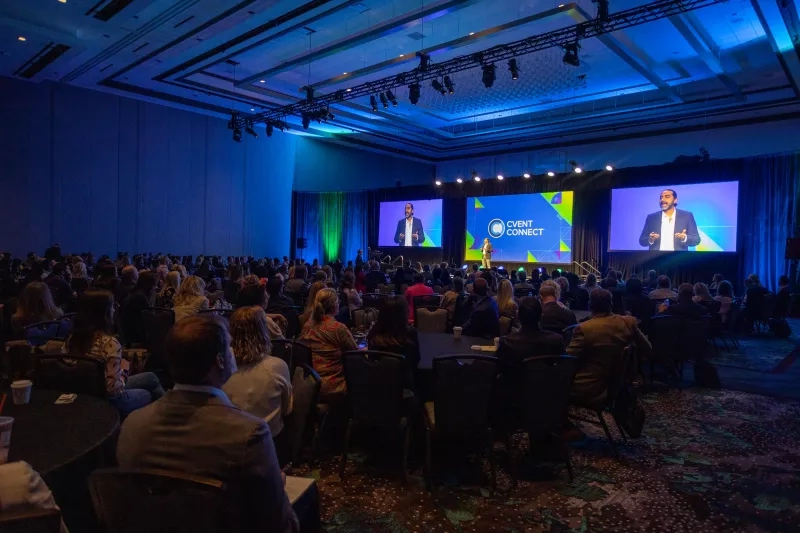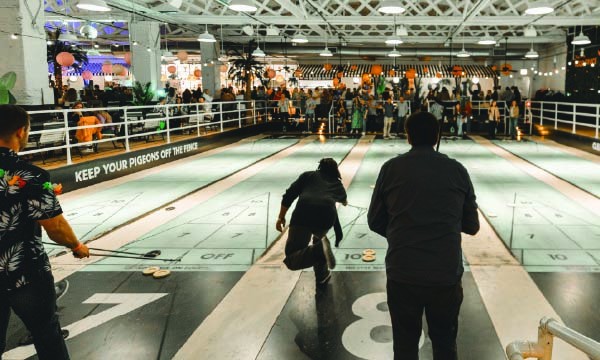In recent years, associations have become comfortable with hosting virtual events, and their members adjusted to consuming virtual industry education content. While the increased reach, conveniences, and cost-savings associated with virtual events cannot be denied, your members are looking to your association to return to in-person events as swiftly and as safely as possible.
Even though industry content is still a large part of association events, members may find themselves choosing to reconnect with fellow attendees and continue hallway conversations rather than attending the next session. Others may find themselves grappling with how to feel safe again in a crowd or battling a new-found in-person event fatigue. Your association’s events will need to find the right balance of networking, content, and breaks within an evolving landscape of safety best practices. This article will cover the top 5 best practices for your association’s return to in-person events.
1. Understanding Your Members Needs and Expectations
A more conservative approach to maximizing budgets will require your association to double down on planning and understanding member demographics. Knowing which of your members are most interested in in-person events and what they are seeking to achieve by attending will help to tailor event focus and spending toward the right priorities.
Don’t hesitate to survey your membership about their new in-person event expectations or what events they anticipate attending in person. Your association may need to assess which members groups or which kinds of events should be in-person, hybrid, or remain virtual.
Communicating early enough in the planning process will also allow you to establish what types of safety protocols in-person attendees would feel most comfortable with.
Will you need additional break-out rooms to split people into smaller or more spaced-out groups? Will you need to reassess food and beverage delivery based on changing guidance or group preferences?
By establishing attendee comfort and safety needs earlier, you’ll give yourself more time to plan with your venue and technology partners - thus reassuring registrants that attending in person will result in a positive, safe experience.
Ask registration questions that allow you to:
- Identify attendee travel locations
- Keep a record of location data for contact tracing
- Utilize attendee tracking with RFID badges to manage sensitive areas for staff, VIPs, or high-risk attendees
2. Finding the Right Venue for your In-Person Event
A shift in budgets, different event needs (especially for hybrid or virtual audiences), and high event demand may also mean that your association’s planning team needs to discover new venue options. Venue partnerships require flexibility and increased communication on how both in-person and online attendees will journey through each stage of the event, consume content, and network with one another.
With venues in high demand and low supply, your association must approach venue selection with an eye for efficiency. The Cvent Supplier Network will help you find the right venue and collect critical information to ensure the venue fits your event needs. You can access diagrams on a venue profile to get a true sense of the space without having to do an on-site visit. This tool also streamlines the request for proposals process, minimizing the time it takes to reach out to and hear back from multiple options.
And while many of your members are feeling more at ease with travel and meeting in larger groups, this sense of comfort is largely due to adhering to more conservative space requirements and safety measures. Even as guidelines change, clients will feel more confident with social distancing measures in-place. Therefore, as you search for the perfect backdrop to host your next event, look for venues that provide flexibility, virtual site tours, and greater reassurance that comfort and safety needs can be met.
With venue sourcing technology, you have a powerful database at your fingertips that will allow you to:
- View destinations and venues at your fingertips
- Narrow down your choices and filter results in seconds
- Send Requests for Proposals (eRFPs) directly from the system
- Evaluate your eRFP responses more efficiently
- Go on virtual venue tours with real-time collaboration
- Store all your historical bids and contracted rates in a single system of record.
3. Designing Event Layouts that Serve Your Members Needs
Now’s the time to reconsider if the seated rows and round tables you’ve always used for layouts are really serving your event for the level of engagement or social distancing that your members desire. Use event diagramming tools to create room layouts that comply with social distancing guidelines or seating arrangements that put more space between attendees. Rather than building room layouts with traditional tightly packed rows, stagger seats.
With the right tools, you can easily design your event to accommodate social distancing and safety guidelines to ensure you have the right attendee capacities for each space. You can also consider designated areas for those looking to intentionally step away from the event programming to finish a conversation, take a break from people, or respond to work emails.
Diagramming tools also allow you to map out where you’ll place hand sanitizing stations, mask stations, wall-mounted cleanliness stations, and more throughout public areas.
As you survey your membership’s event expectations, you may find that contact-avoidant practices such as touch-less check-in are becoming a social norm and should be used at your association’s in-person events. With Cvent OnArrival, attendees can use a QR code received before the event to minimize contact and have a touchless check-in and badge-printing experience. This way, your association can demonstrate its commitment to efficiency and member safety at its in-person events.
4. Considering Capacity Differently
Pre-pandemic, the idea that there could be too many attendees or people at a conference or session was absurd. Having attendees crowding in just further validated that the content and speakers were valuable to your members. Now controlling session attendance is one of the primary methods your association can use to manage safe distancing and comfort zones for your members. Having extra room in your event spaces is not only reassuring from a safety perspective but more comfortable for those adjusting to being back in person.
First, your association should reconsider which member groups make sense to be a part of each in-person event. Limit the number of opportunities for overcapacity by structuring event content tailored to specific audiences. Second, set strict session capacities to ensure that only the safest number of attendees will be allowed to register for each session. Then, have planners check attendance to popular sessions early, so they can make session adjustments if needed.
Touchless technology can also be utilized in managing capacity. Use self-check-in kiosks to facilitate contactless check-in for attendees. During the event, use scanners when checking-in attendees to manage capacity controls. Planners can also use event management tools to monitor attendance closely and use overflow session rooms for near or at-capacity sessions.
5. Facilitating Connection and Communication via Mobile Event App
Keeping members and event attendees engaged goes beyond what’s happening during the event and being able to communicate to the right groups at the right moment matters. Associations can leverage the Event Marketing and Management Platform for communicating with attendees quickly and efficiently before, during, and post-event. Attendees can use an event mobile app to receive all relevant information, communication, notifications, and content.
Members can feel safe and comfortable at your events with push notifications that manage overflow rooms for popular sessions and keep attendees informed. Similarly, a mobile app allows for digital content distribution. Sponsors and trade show booth participants love to distribute content to attendees, but rather than give physical one-sheets, send, and receive event content and literature to decrease contact and save paper.
When it comes to networking and tradeshows, a mobile event app facilitates connections between attendees while allowing them to maintain a distance through contact information sharing. Attendees are also able to express interest in exhibitors and sponsors before arriving at the event and set up meetings. With the right lead capture tools, attendees or sponsors can collect contact information with a single scan or wave of an RFID encode badge. To manage capacity and the timing of attendee interactions, consider using pre-scheduled appointments. Allow attendees or planners to schedule meetings before or during the event to maximize face-to-face interactions.
For hybrid events, a mobile app also helps provide the online attendees with the same audience interaction functionality as the in-room attendees. Ensuring that all polls and speaker questions are submitted through the app removes any chance of audience bias and creates a joined-up experience for hybrid events.
Bonus: Repurposing Content to Drive Engagement
Before the shift to virtual events, members often understood that to have access to the event’s content, attending and participating in the event was necessary. With the shift to virtual, content availability expectations changed. With all events being streamed, the recording and sharing of content became the new norm. Now associations are considering how to store, package, and share their event content and to which members. The return to in-person events adds an additional layer of complexity: how should in-person event content be shared or provided to members who were not at the event?
Your association might consider sending out content from similar events as part of your in-person event promotion strategy. Alternatively, the demand may be for additional content beyond the physical event. In this case, a library of on-demand sessions filmed during the physical event could complement a year-round program of webinars and virtual talks.
Discover how associations like yours are planning & executing their most successful live in-person events by aligning their team & strategies with event technology by reviewing these association event success stories









